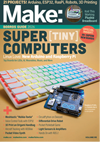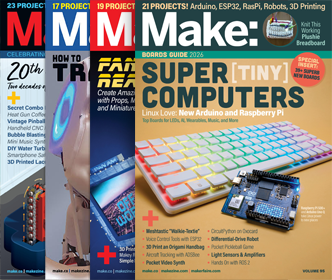Collin’s Lab: DIY iPad Stylus
http://blog.makezine.com/archive/2010/05/collins_lab_diy_ipad_stylus.html
Fingertip input is great for most touchscreen usage like typing, web-browsing – all sorts of virtual button-pushing tasks. But for many people, drawing remains an activity best approached with a pen, pencil, brush, etc.
With a bit of conductive foam and wire, it’s surprisingly easy to make your own conductive stylus, suitable for use with iPhone, iPad and similar conductive touchscreen devices – and you’ll likely find it a lot more precise compared to regular fingertip input.







